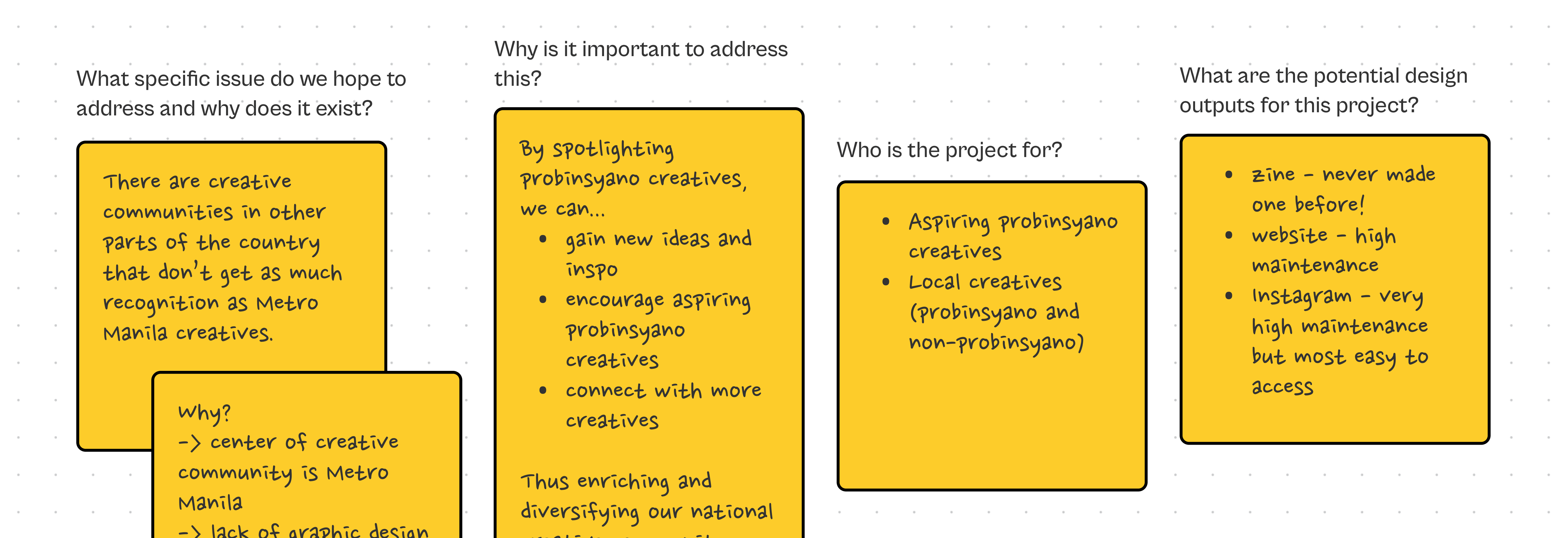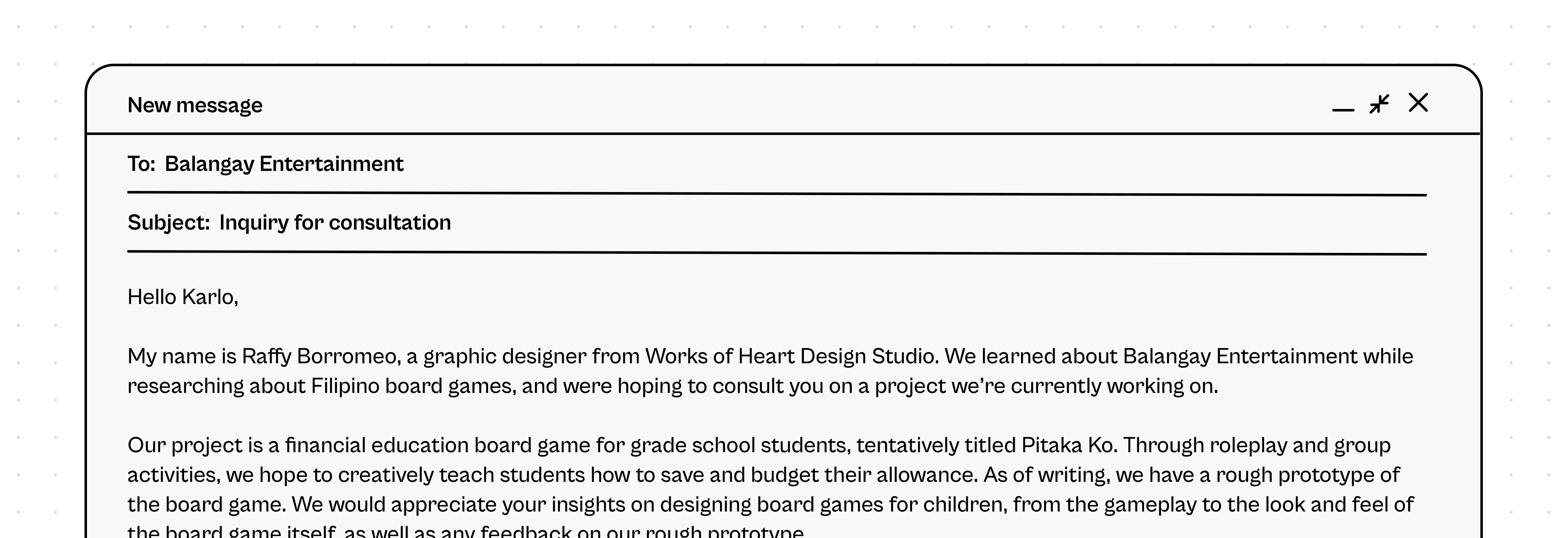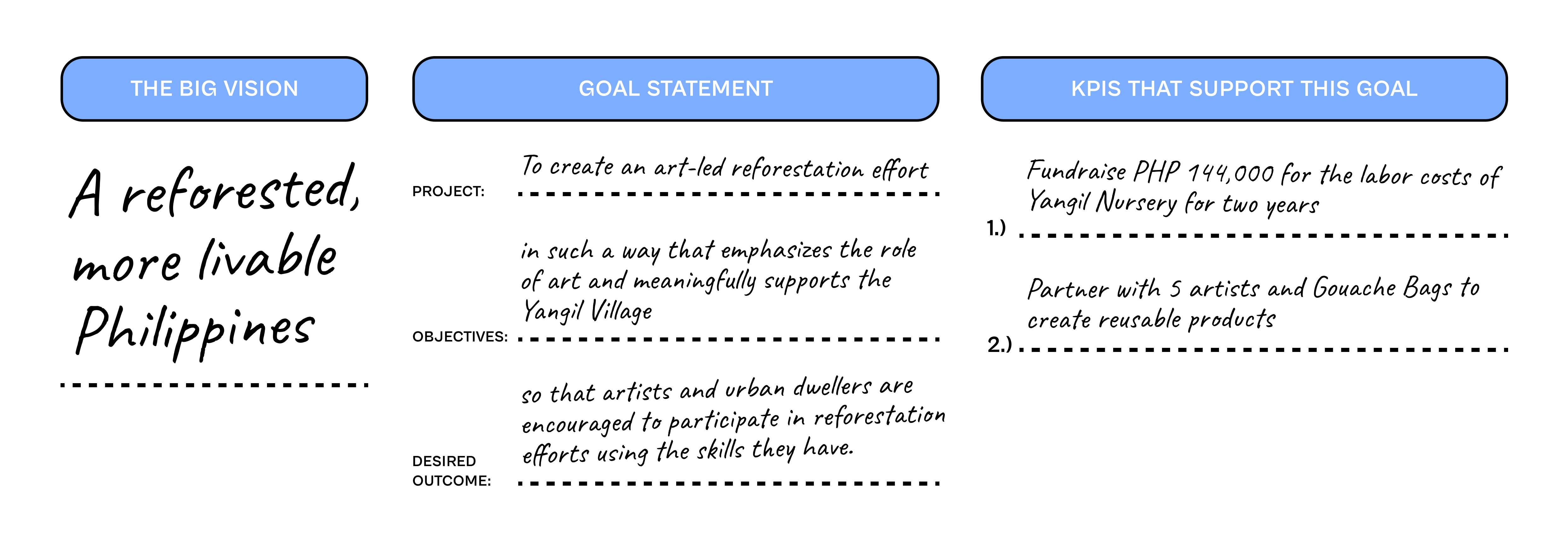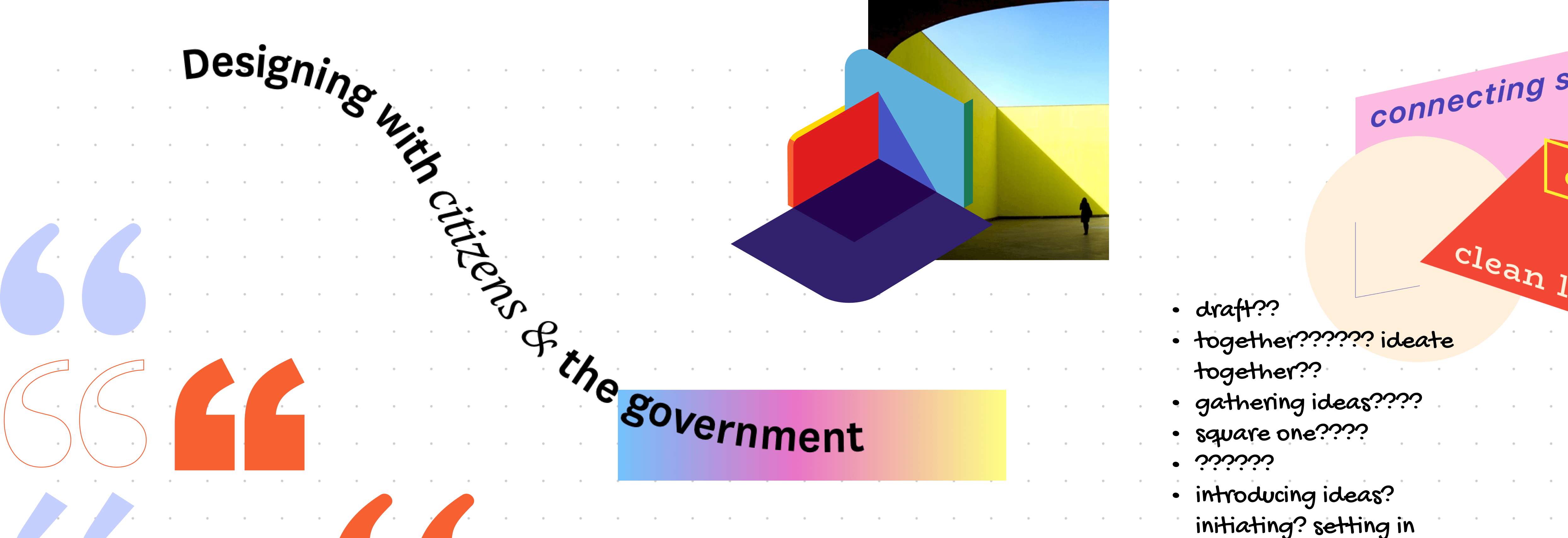
We’re serial passion project starters here at Works of Heart, if you can’t already tell. We’ve found that, as social impact designers, it’s our responsibility not only to help organizations do good, but to push what good design can do through studio-led initiatives—to do good ourselves.
Sometimes it begins with an idea for what we want to create (like a zine or a board game); other times it starts with a specific cause or community in mind (such as reforestation or social entrepreneurship). Either way, a genuine care for our advocacies and a belief that design can make a difference are what fuel our initiatives.
Identify an issue
A quick scroll through our Heart page will tell you that each member of our team has an advocacy they care about. This is where our initiatives begin: by identifying a specific challenge we hope to address in an advocacy we support. We do a lot of initial research in this stage, which often overwhelms us with the many issues in the sector, but we try to limit our scope as much as possible so that we stay focused.
Galing Probinsya started with a rough idea of the issue we wanted to address: the centrality of the Philippine creative scene in Metro Manila. We realized that when people talk about Philippine design, they usually just include NCR-based creatives—a view we felt was limiting, since we’ve met so many amazing probinsyano creatives throughout the years. Our early idea for the initiative was to create some sort of directory of these probinsyano creatives, to give them a platform for their stories and work.
Here are some questions we asked ourselves at the beginning of the project and our answers to them:

The answers to these questions (and the many more that pop up in the process of creating an initiative!) give us a direction to work toward. The project may swerve into a completely different direction as you deep-dive into the topic—be open to these possibilities and trust the process.
Seek the right collaborators
Our initiatives would be impossible without collaborators who share the same visions and goals. We’re fortunate to have a network of people who complement our skills and are good at what they do, but there are also times where we have had to reach out to organizations and experts with whom we’ve never collaborated with. Cold emailing is fine (we’ve successfully done many initiatives this way!) so don’t be afraid to reach out and make sure you’re clear with your intentions and ideas. We always prepare a pitch deck that includes the project info, initial mock-ups of the output, ways we can collaborate, and an invitation to discuss their own ideas too. We may initiate the project, but we value our partners’ input and make sure that they gain something from the project as well.
For a couple of our initiatives, we were able to secure funding from other organizations to make them happen. Pitaka Ko is one such example—we joined Sun Life Foundation’s Brighter World Builder Challenge where we won a Php 200,000 grant to develop our financial literacy board game. Such funding opportunities can be rare, so file away all your project ideas and when the right opportunity comes, be ready to grab it.
Besides the financial aspect, Pitaka Ko was a challenge with which we needed help on several fronts. We had never designed a board game before—let alone the gameplay itself—so we consulted the designers of Balangay Entertainment for their tips and insights. Knowing that allowance can be a sensitive topic among children and that we weren’t familiar with how personal finance is being taught in schools, we also reached out to public school teachers for interviews and Focus Group Discussions (FGD), and eventually tested a prototype of the board game with one of the teachers’ classes.

Set standards for success
It’s important to recognize both the possibilities and limits of a design initiative. We’re of the belief that design can’t save the world, but it can contribute to creating a better one. So how do we know if our design project has actually made a difference? Can you even measure social impact? This is where our goal statement and key performance indicators (KPIs) come in. Whether or not these goals are achieved will be determined at the end of the project.
We’re of the belief that design can’t save the world, but it can contribute to creating a better one.
For Future Forest, our greater vision was reforestation—a complex project that we knew could not be solved by a single, small-scale design project. So we decided to focus on aiding the reforestation of a specific area: San Felipe, Zambales, where our friends from MAD Travel were already helping the community and the environment recover from the 1991 Mount Pinatubo eruption. With our partner artists and Gouache Bags, we created products rooted in experiences with the Aeta community that helped fund these efforts.

Do the work
Once we have a solid project brief in place, it’s time to actually do the design work. At this point, we’d have already decided on a design output based on all our research and talks with our collaborators—but starting is still often the most daunting part for us. We take things step by step, starting with setting a creative strategy: identifying user personas, peers, and positioning; then moving on to design: crafting a visual direction and putting outputs together piece by piece.
For the Good Design Assembly, the challenge was to create a look that would resonate with people from both the design industry and the social impact sector, who we were hoping would attend the event. After several explorations, we anchored the visuals on the idea of a conversation, which was the essence of the whole initiative: to open meaningful discussions on the intersection of design and social impact.

This is just an outline of our process—it’s not usually this linear. There’s so much more work that goes into an initiative, but there’s also a lot of growth and joy in the process. It’s always fulfilling to see projects come to life, especially projects that touch the lives of others. Click here to grab a copy of our free FigJam template for starting your own design initiative! If you have any questions, we’d be happy to answer them on the Good Design Club Discord server.
